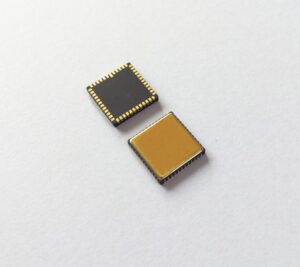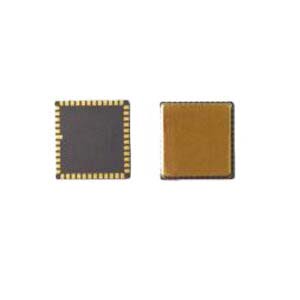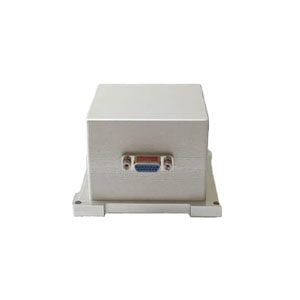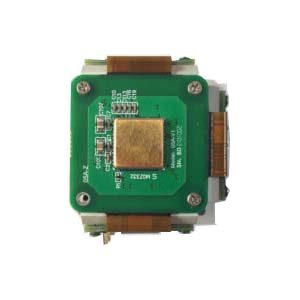When the gyro north seeker is at high latitudes, its accuracy becomes so poor that it is hard to find north. Therefore, improve the precision of north seeking, so that it can also perform well in high latitudes.ER-MG2-100 can solve this problem.
1. Comparison of north-seeking methods
The north seeking method can be divided into static and dynamic north-seeking methods according to the motion state of the gyroscope.
The static north seeking method can be divided into two positions, four positions and multiple positions according to the number of positions collected by the gyroscope in the static state.
The static north seeking method is used to calculate the north seeking value by rotating the gyroscope to several different positions and then stopping. These positions maintain the same size interval with each other and then take the same time of static output data. Its north seeking principle is basically the same, and its implementation is relatively simple. The difference is only that the number of positions where data is collected is different. Therefore, the time for north seeking increases as the number of positions increases. However, static north seeking methods also have drawbacks. Due to the different number of locations selected by each static north seeking method, the method of solving the north seeking angle is also different, and the demand for other external information is also different, such as the geographical latitude of the gyroscope in the north seeking, the rotation accuracy and inclination of the turntable, and the random drift of the gyroscope itself.
The dynamic north seeking method is to fix the MEMS gyro on the horizontal turntable, make its sensitive axis parallel to the plane of the turntable, and then solve the real-time data collected by the gyroscope in the state of uniform rotation to find the north angle. The output signal of MEMS gyro can be modulated periodically by rotating at a constant speed. This method can effectively suppress random errors in MEMS gyro and improve the precision of north seeking. However, due to the need for continuous rotation and real-time collection of gyro output data, which requires relatively high hardware facilities, the speed of rotation and the sampling frequency of gyro data also need to be considered when formulating a rotation scheme.
2. Feasibility analysis of MEMS gyroscope north seeking
When designing a north seeking gyro, it is necessary to consider not only the measurement accuracy of the gyro, but also the structure, cost, and other information. For north seeking, dynamically tuned gyroscopes, interferometric fiber optic gyroscopes, and ring laser gyroscopes are the main gyroscopes used today for north seeking.
MEMS gyroscopes have potential advantages in north seeking, but their measurement accuracy is slightly insufficient compared to the previous several gyroscopes. When using a MEMS gyroscope for north seeking, angular random walk and bias stability in the gyroscope will mainly affect the accuracy of the gyroscope. Angular random walk is the main error that limits the performance of an attitude control system. The smaller the value, the smaller the error and the higher the resolution. The higher the resolution, the stronger the ability to detect the minimum angular rate. MEMS gyros can be divided into three categories based on performance: speed level, tactical level, and inertial navigation level.
Currently, MEMS gyroscopes are basically between the speed level and the tactical level. If you want to achieve better north seeking results, you need to improve the accuracy of MEMS gyroscopes to align them with the inertial navigation level. Therefore, it is also necessary to filter and compensate the output of the gyroscope, calibrate the installation error of the gyroscope itself, and ensure that MEMS gyroscopes can achieve north seeking work.

Ericco's ER-MG2-100 High Performance North Seeking Gyroscope is a single-axis MEMS angular rate sensor, which can reach up to inertial navigation level, and the digital output conforms to SPI slave mode 3 protocol.
100°/s Measurement Range
0.02°/hr Bias Instability
<0.1°/hr Bias Stability (1σ 10s)
0.005°/√hr Angular Random Walk
Angular rate data is presented as a 24-bit word.
The ER-MG2-100 is intended for north seeking applications. Advanced differential sensor design rejects the influence of linear acceleration, enabling the ER-MG2-100 to operate in exceedingly harsh environments where shock and vibration are present.
The ER-MG2-100 is available in a hermetically sealed ceramic LCC surface mount package, and is capable of operating at 5V supply and a wide temperature range (−45°C to +85°C).
If you are interested, please feel free to contact us.
More Technical Questions
1.How to Distinguish MEMS Accelerometer and MEMS Gyroscope Correctly?
2.MEMS gyroscopes, accelerometers and magnetometers
3.How do MEMS gyroscopes work?
4.How accurate is MEMS gyroscope?
5.Application of mems accelerometer in petroleum logging
6.MEMS gyroscope VS FOG: What’s the difference between them?
Products in Article



.jpg)



